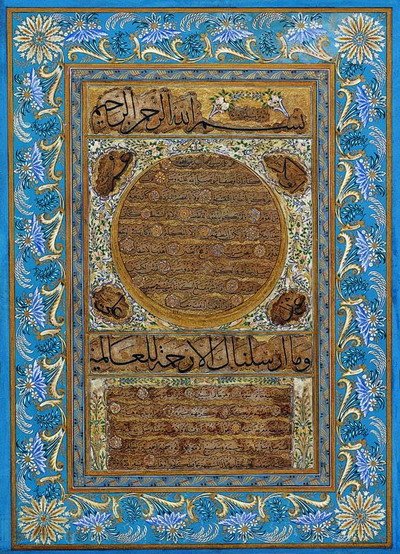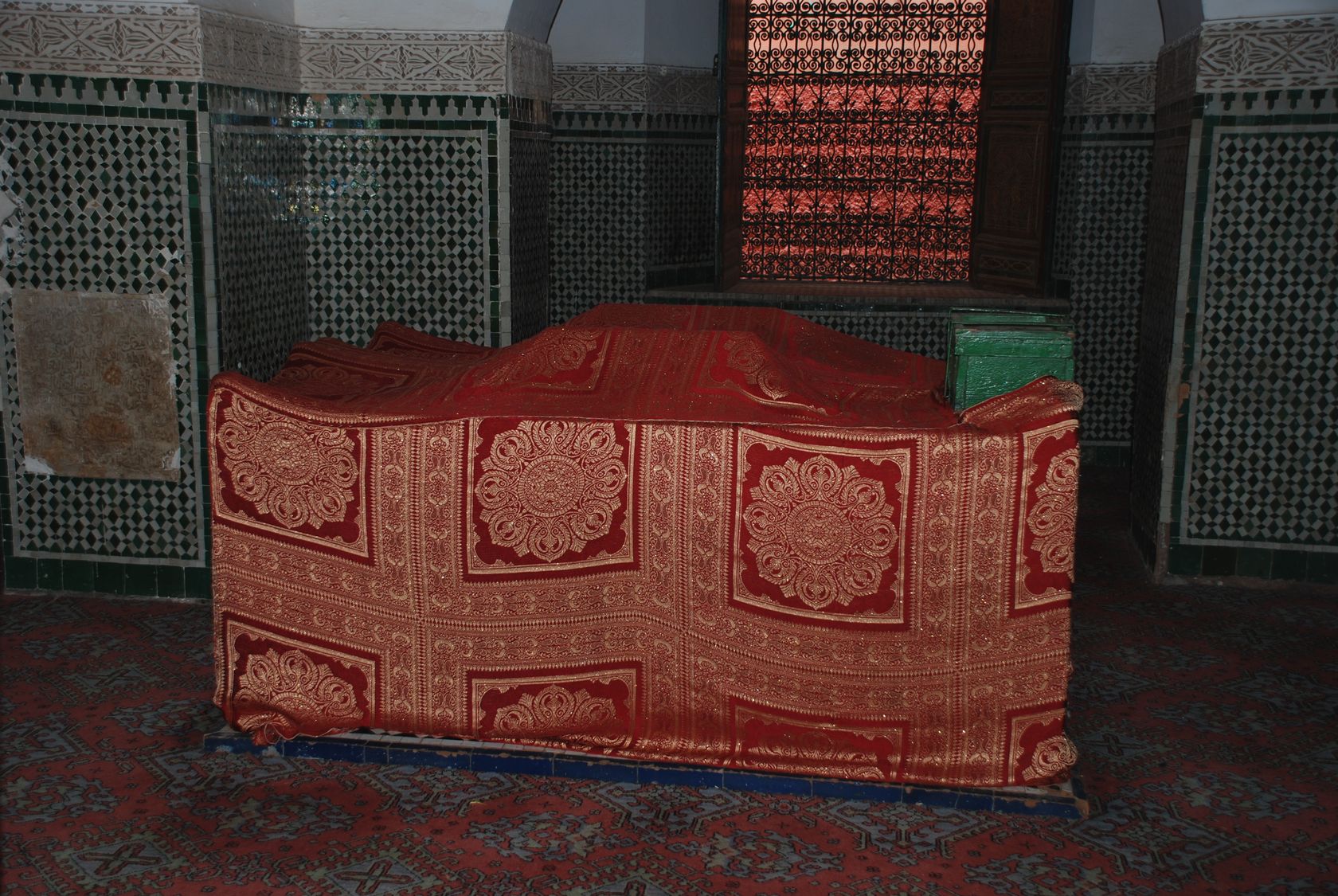|
Hilya
The term ''hilya'' (Arabic , plural: ''ḥilan'', ''ḥulan''; tr, hilye, plural: ) denotes both a visual form in Ottoman art and a religious genre of Ottoman Turkish literature, each dealing with the physical description of Muhammad. Hilya literally means "ornament". They originate with the discipline of ''shama'il'', the study of Muhammad's appearance and character, based on hadith accounts, most notably Tirmidhi's ''al-Shama'il al-Muhamadiyyah wa al-Khasa'il al-Mustafawiyyah'' ("The Sublime Characteristics of Muhammad"). In Ottoman-era folk Islam, there was a belief that reading and possessing Muhammad's description protects the person from trouble in this world and the next, it became customary to carry such descriptions, rendered in fine calligraphy and illuminated, as amulets. In 17th-century Ottoman Turkey, ''hilyes'' developed into an art form with a standard layout, often framed and used as a wall decoration. Later ''hilyes'' were also written for the first four Cali ... [...More Info...] [...Related Items...] OR: [Wikipedia] [Google] [Baidu] |
Hilye Yesarizade Mustafa Izzet Efendi
The term ''hilya'' (Arabic , plural: ''ḥilan'', ''ḥulan''; tr, hilye, plural: ) denotes both a visual form in Ottoman art and a religious genre of Ottoman Turkish literature, each dealing with the physical description of Muhammad. Hilya literally means "ornament". They originate with the discipline of ''shama'il'', the study of Muhammad's appearance and character, based on hadith accounts, most notably Tirmidhi's ''al-Shama'il al-Muhamadiyyah wa al-Khasa'il al-Mustafawiyyah'' ("The Sublime Characteristics of Muhammad"). In Ottoman-era folk Islam, there was a belief that reading and possessing Muhammad's description protects the person from trouble in this world and the next, it became customary to carry such descriptions, rendered in fine calligraphy and illuminated, as amulets. In 17th-century Ottoman Turkey, ''hilyes'' developed into an art form with a standard layout, often framed and used as a wall decoration. Later ''hilyes'' were also written for the first four ... [...More Info...] [...Related Items...] OR: [Wikipedia] [Google] [Baidu] |
Ottoman Art
Turkish art refers to all works of visual art originating from the geographical area of what is present day Turkey since the arrival of the Turks in the Middle Ages. Turkey also was the home of much significant art produced by earlier cultures, including the Hittites, Ancient Greeks, and Byzantines. Ottoman art is therefore the dominant element of Turkish art before the 20th century, although the Seljuks and other earlier Turks also contributed. The 16th and 17th centuries are generally recognized as the finest period for art in the Ottoman Empire, much of it associated with the huge Imperial court. In particular the long reign of Suleiman the Magnificent from 1520 to 1566 brought a combination, rare in any ruling dynasty, of political and military success with strong encouragement of the arts. The ''nakkashane'', as the palace workshops are now generally known, were evidently very important and productive, but though there is a fair amount of surviving documentation, much rema ... [...More Info...] [...Related Items...] OR: [Wikipedia] [Google] [Baidu] |
Ottoman Illumination
Turkish or Ottoman illumination covers non-figurative painted or drawn decorative art in books or on sheets in ''muraqqa'' or albums, as opposed to the figurative images of the Ottoman miniature. In Turkish it is called “tezhip”, meaning “ornamenting with gold”. It was a part of the Ottoman Book Arts together with the Ottoman miniature (''taswir''), calligraphy (''hat''), bookbinding (''cilt'') and paper marbling (''ebru''). In the Ottoman Empire, illuminated and illustrated manuscripts were commissioned by the Sultan or the administrators of the court. In Topkapi Palace, these manuscripts were created by the artists working in Nakkashane, the atelier of the miniature and illumination artists. Both religious and non-religious books could be illuminated. Also sheets for albums ''levha'' consisted of illuminated calligraphy (''hat'') of ''tughra'', religious texts, verses from poems or proverbs, and purely decorative drawings. The illuminations were made either surround ... [...More Info...] [...Related Items...] OR: [Wikipedia] [Google] [Baidu] |
Physical Description Of Muhammad
The permissibility of depictions of Muhammad in Islam has been a contentious issue. Oral and written descriptions of Muhammad are readily accepted by all traditions of Islam, but there is disagreement about visual depictions. The Quran does not explicitly or implicitly forbid images of Muhammad. The ahadith (supplemental teachings) present an ambiguous picture, but there are a few that have explicitly prohibited Muslims from creating visual depictions of human figures. It is agreed on all sides that there is no authentic visual tradition (pictures created during Muhammad's lifetime) as to the appearance of Muhammad, although there are early legends of portraits of him, and written physical descriptions whose authenticity is often accepted. The question of whether images in Islamic art, including those depicting Muhammad, can be considered as religious art remains a matter of contention among scholars. They appear in illustrated books that are normally works of history or poetry, ... [...More Info...] [...Related Items...] OR: [Wikipedia] [Google] [Baidu] |
Abu'l-Faraj Ibn Al-Jawzi
ʿAbd al-Raḥmān b. ʿAlī b. Muḥammad Abu 'l-Faras̲h̲ b. al-Jawzī, often referred to as Ibn al-Jawzī (Arabic: ابن الجوزي, ''Ibn al-Jawzī''; ca. 1116 – 16 June 1201) for short, or reverentially as ''Imam Ibn al-Jawzī'' by some Sunni Muslims, was an Arab Muslim jurisconsult, preacher, orator, heresiographer, traditionist, historian, judge, hagiographer, and philologist who played an instrumental role in propagating the Hanbali school of orthodox Sunni jurisprudence in his native Baghdad during the twelfth-century. During "a life of great intellectual, religious and political activity," Ibn al-Jawzi came to be widely admired by his fellow Hanbalis for the tireless role he played in ensuring that that particular school – historically, the smallest of the four principal Sunni schools of law – enjoy the same level of "prestige" often bestowed by rulers on the Maliki, Shafi'i, and Hanafi rites. Ibn al-Jawzi received a "very thorough education" during his ... [...More Info...] [...Related Items...] OR: [Wikipedia] [Google] [Baidu] |
Description Of The Prophet (Hilya Al-nabi), By Hafiz Osman (CBL T 559
Description is the pattern of narrative development that aims to make vivid a place, object, character, or group. Description is one of four rhetorical modes (also known as ''modes of discourse''), along with exposition, argumentation, and narration. In practice it would be difficult to write literature that drew on just one of the four basic modes. As a fiction-writing mode Fiction-writing also has modes: action, exposition, description, dialogue, summary, and transition. Author Peter Selgin refers to ''methods'', including action, dialogue, thoughts, summary, scenes, and description. Currently, there is no consensus within the writing community regarding the number and composition of fiction-writing modes and their uses. Description is the fiction-writing mode for transmitting a mental image of the particulars of a story. Together with dialogue, narration, exposition, and summarization, description is one of the most widely recognized of the fiction-writing modes. As stated ... [...More Info...] [...Related Items...] OR: [Wikipedia] [Google] [Baidu] |
Abu Hurairah
Abu Hurayra ( ar, أبو هريرة, translit=Abū Hurayra; –681) was one of the companions of Islamic prophet Muhammad and, according to Sunni Islam, the most prolific narrator of hadith. He was known by the ''kunyah'' Abu Hurayrah "Father of a Kitten", in reference to his attachment to cats, and he was a member of Suffah. Later during the caliphate era, Abu Hurairah served as Ulama teacher, governor, soldier, and Hadith auditor. Abu Hurairah was acknowledged by Muslim scholars for his extraordinary photographic memory which allowed him to memorize massive numbers of over 5,000 hadiths which later produced more than 500,000 chain narrations, or ''Isnad'' which make Abu Hurairah an exemplar role model for Hadith studies scholars. Life Ancestry Abu Hurairah's personal name (''ism'') is unknown, and so is his father's. The most popular opinion, voiced by Al-Dhahabi and Ibn Hajar al-Asqalani, is that it was 'Abd al-Raḥmān ibn Ṣakhr (). According to Al-Dhahabi, Ab ... [...More Info...] [...Related Items...] OR: [Wikipedia] [Google] [Baidu] |
Al-Bayhaqi
Abū Bakr Aḥmad ibn Ḥusayn ibn ʿAlī ibn Mūsā al-Khusrawjirdī al-Bayhaqī ( ar, أبو بكر أحمد بن حسين بن علي بن موسى الخسروجردي البيهقي, 994–1066), also known as Imām al-Bayhaqī, was born c. 994 CE/384 AH in the small town of Khosrowjerd near Sabzevar, then known as Bayhaq, in Khurasan. During his lifetime, he became a famous Sunni hadith expert, following the Shafi'i school in fiqh and the Ash'ari school of Islamic Theology.Ovamir Anjum, Politics, Law, and Community in Islamic Thought: The Taymiyyan Moment (Cambridge Studies in Islamic Civilization) 2012, p 142. Biography Al-Bayhaqi was a scholar of ''fiqh'' of the Shafi'i school of thought, as well as of that of hadith. He studied ''fiqh'' under Abū al-Fatḥ Nāṣir ibn al-Ḥusayn ibn Muḥammad al-Naysaburi as well as Abul Hasan Hankari. He also studied hadith under Hakim al-Nishaburi, Abu Mansur Al-Baghdadi and others, and was al-Nishaburi's foremost pupil. He died ... [...More Info...] [...Related Items...] OR: [Wikipedia] [Google] [Baidu] |
Qadi Ayyad
ʿIyāḍ ibn Mūsā (1083–1149) ( ar, القاضي عياض بن موسى, formally Abū al-Faḍl ʿIyāḍ ibn Mūsā ibn ʿIyāḍ ibn ʿAmr ibn Mūsā ibn ʿIyāḍ ibn Muḥammad ibn ʿAbd Allāh ibn Mūsā ibn ʿIyāḍ al-Yaḥṣubī al-Sabtī ar, أبو الفضل عياض بن موسى بن عياض بن عمرو بن موسى بن عياض بن محمد بن عبد الله بن موسى بن عياض اليحصبي السبتي), born in Ceuta, then belonging to the Almoravid dynasty, was the scholar of Maliki fiqh and great imam of that city and, later, a qadi in the Emirate of Granada. Biography Iyaḍ was born into an established family of Arab origin in Ceuta. As a scion of a notable scholarly family, ʿIyad was able to learn from the best teachers Ceuta had to offer. The judge Abu ʿAbd Allah Muhammad b. ʿIsa (d. 1111) was ʿIyad’s first important teacher and is credited with his basic academic formation. Growing up, ʿIyad benefited from the traffic of sc ... [...More Info...] [...Related Items...] OR: [Wikipedia] [Google] [Baidu] |
Süleyman Çelebi (poet)
Süleyman Çelebi (1351 - 1422 AD) (pronounced Sulaiman Chalabi), imam of the Grand Mosque of Bursa during the Ottoman Empire, was a mystic and author of ''Wasilat al-Najat'', his only known work, the first and most famous of the Turkish-written mawlids, the nativity of the Prophet Muhammad. The work is commonly known as the ''Mevlidi Sherif - Süleyman Çelebi''. Sulaiman Chalabi was born sometime between 1346-1351 and his death date is 1422 AD. Biography He was born in the period of Orhan Gazi. According to some sources, he is the son of Ahmed Pasha, one of the viziers of the Ottoman Sultan Murad I, and the grandson of Sheikh Mahmud Efendi. His grandfather, aka Mahmud Bey, is the grandson of Sheikh Edebali and was one of those who sailed to Rumelia in 1338 under the leadership of Süleyman Pasha, son of Orhan. He received a good education in Bursa in his youth. At that time, the title of "Çelebi" was given to scholars and the elders of the Mevlevi Order. However, there i ... [...More Info...] [...Related Items...] OR: [Wikipedia] [Google] [Baidu] |
Aisha
Aisha ( ar, , translit=ʿĀʾisha bint Abī Bakr; , also , ; ) was Muhammad's third and youngest wife. In Islamic writings, her name is thus often prefixed by the title "Mother of the Believers" ( ar, links=no, , ʾumm al-mu'min, muʾminīn), referring to the description of Muhammad's wives in the Qur'an. Little is known about the early life of Aisha. A preponderance of classical sources converge on Aisha being six or seven years old at the time of her marriage, and nine at the consummation; her age has become a source of ideological friction in modern times. Aisha had an important role in early Islamic history, both during Muhammad's life and after his death. In Sunni Islam, Sunni tradition, Aisha is portrayed as scholarly and inquisitive. She contributed to the spread of Muhammad's message and served the Muslim community for 44 years after his death. She is also known for narrating 2,210 hadiths, not just on matters related to Muhammad's private life, but also on topics such ... [...More Info...] [...Related Items...] OR: [Wikipedia] [Google] [Baidu] |





